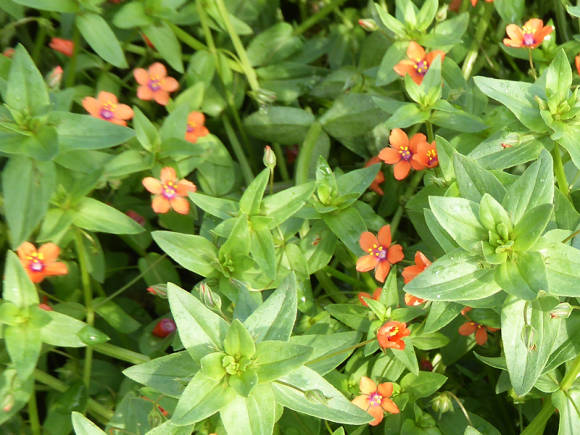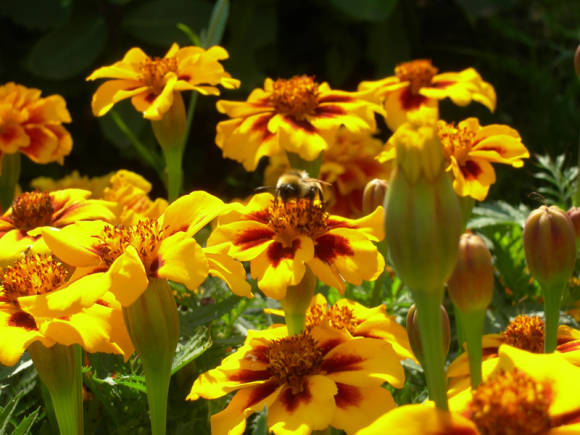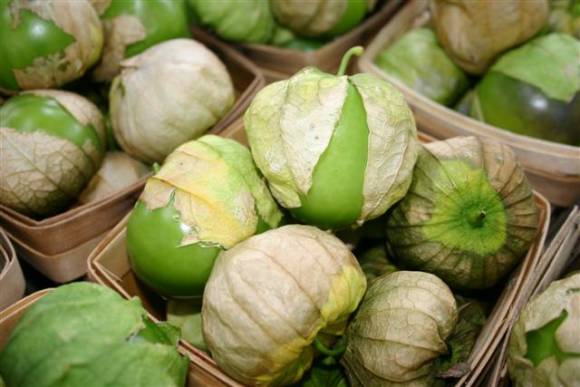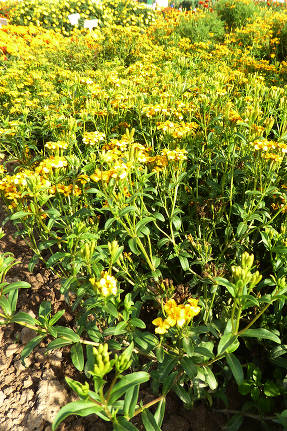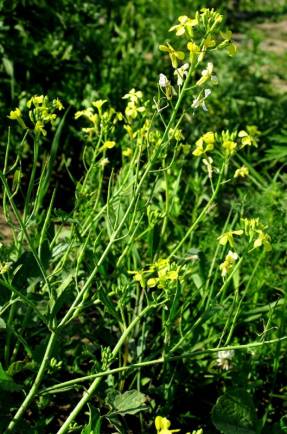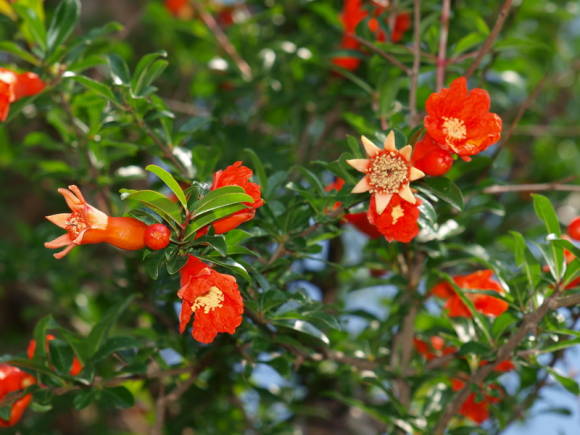Calendula - now saffron is not poor, but gourmet
Calendula is strongly associated with the majority of the pharmacy and the vials of tincture. However, this is only one of the aspects of its application. Of course, the most significant, but still ...

Now in the popular and scientific literature, the nutritional value of this culture is increasingly mentioned. Calendula flower extract has a strong antioxidant effect and in doses of 10 mg / kg and 30 mg / kg protects sunflower and rapeseed oils from oxidation more strongly than basil, mullein and blackhead (Prunellavulgaris)... The issue of using calendula as an antioxidant in the food industry in the manufacture of sausages, cheeses and other products is being discussed. The French, especially in Paris, are used to beef with caledula. It can be found commercially in dried form and as a liquid extract.
Interestingly, in the old days, calendula was called the saffron of the poor and was used to give an elegant yellowish tint not only to soups and dishes made from rice and vegetables, but even to cheeses, wines, puddings and pastries. Basically, those dishes, in the preparation of which vegetable and animal fats are used, which allow carotenoids to be evenly distributed in the mass of the product and not to lose their color brightness. Calendula very well imparts its color to fat milk and cream.
Calendula carotenoids are an important food coloring that can be used not only in the home kitchen, but also in the food industry, while being absolutely harmless. Currently, carrots are mainly used for this.
This is a promising spice and flavoring plant, which, moreover, can please with fresh produce from the beginning of July until frost. Reed flowers are used as a spice. Baskets generally have a rather coarse texture and a more resinous taste, which is not to everyone's liking. Hence the main requirement for varieties - terry and once again terry, and, of course, a bright color - yellow or orange. Although in recent years varieties with a burgundy color have appeared, for example, Touch of Red. They are also quite suitable. But light-colored varieties, such as Pink Surprise or Kabluna Epricot, are not the best choice for a culinary specialist.
Calendula Recipes
"Petals", and scientifically ligate flowers, give dishes not only color, but also a tart taste, therefore they are very suitable as an ingredient saladsmaking them more savory and aromatic. These salads are seasoned with olive or linseed oil. This is how the maximum benefit is achieved. For example, take fresh cucumbers, radishes, dill, and a hard-boiled egg. Cut everything, add calendula petals to taste and season with a mixture of olive oil and lemon juice.

In winter you can cook oil infused with calendula petals... To do this, 20-30 g of coarsely crushed petals are insisted in the dark in a well-sealed glass container in 0.5 liters of olive or sunflower oil for a week in a room. Then the oil is transferred to the refrigerator so that it does not fade or go rancid. Salads are served with it. But for frying, it is better to use ordinary vegetable oil.
And here is an example of a salad dressed with sour cream: mix marigold flowers, cubes of fresh cucumbers, carrots, boiled chicken egg and salt, dill and onions.
Calendula is also used to make more essential dishes such as soups, omelets, casseroles, baked goods, meat and fish dishes, and even pastries. Pastry chefs and housewives sometimes use calendula as an absolutely harmless and even very useful food coloring to give dough or cream a beautiful golden hue.
Wonderful recipe oils with calendula petals... To do this, grind the petals with butter in a mortar until smooth. Season the resulting oil with salt and black pepper to taste and spread on crackers or bread as cute and healthy sandwiches.
Another option is to use various Mediterranean herbs instead of pepper - basil, rosemary, marjoram, etc. On top, you can put a leaf of lettuce, a circle of cucumber or radish. You can also cook cottage cheese. It is only preferable to choose fatter - 18%.
As a dressing, you can grind vegetable oil with petals and season salads with it. Or you can infuse apple cider or grape vinegar. Only you need to store the resulting product for no more than a month or two, in a cool and dark place.
Dairy rice or semolina porridge with the addition of calendula... First, the color is beautiful, and second, the added benefit. In winter, dried petals can be used for such a dish. An omelet with petals turns out to be delicious. To do this, they are added to the already beaten eggs and fried.
I like to add calendula in mashed soups... Vegetables and petals are boiled in salted water, then whipped with a blender and olive oil is added. After that, the grated soup is served with the addition of grated cheese, preferably parmesan.
Are used infusions from dry or fresh calendula petals and in the form of tea, which is very pleasant to the taste and is especially good with a bite with a slice of lemon or honey. This drink is able to have a beneficial effect on digestion, the state of blood vessels and improves blood circulation, therefore it is traditionally recommended for people suffering from gastritis, colds, vitamin deficiencies, varicose veins.
Calendula goes well with fish dishes. They can be added to brine when pickling sprat, herring, mackerel, or to dressing for pouring. It fits quite harmoniously into the recipe. marinated fish.
In general, calendula is an almost universal spice - it will be in place from salad to dessert. And the benefits are undeniable.
When storing for future use, the petals can be immediately separated from the basket and dried, or first the whole basket is dried, and then the petals are separated. It does not matter. The most important thing is that both during drying and during storage there is no access to direct sunlight, otherwise they will greatly fade in a few days. The shelf life of this product is no more than a year.
Calendula Recipes:

